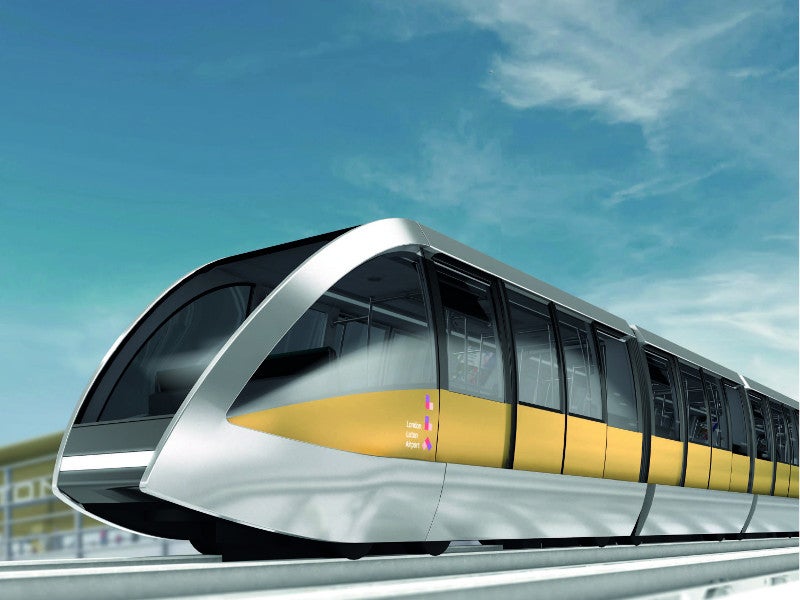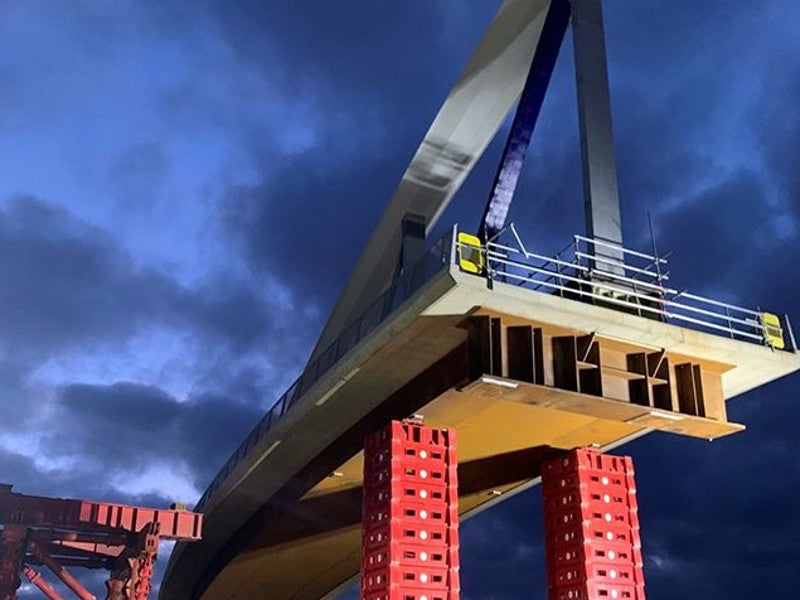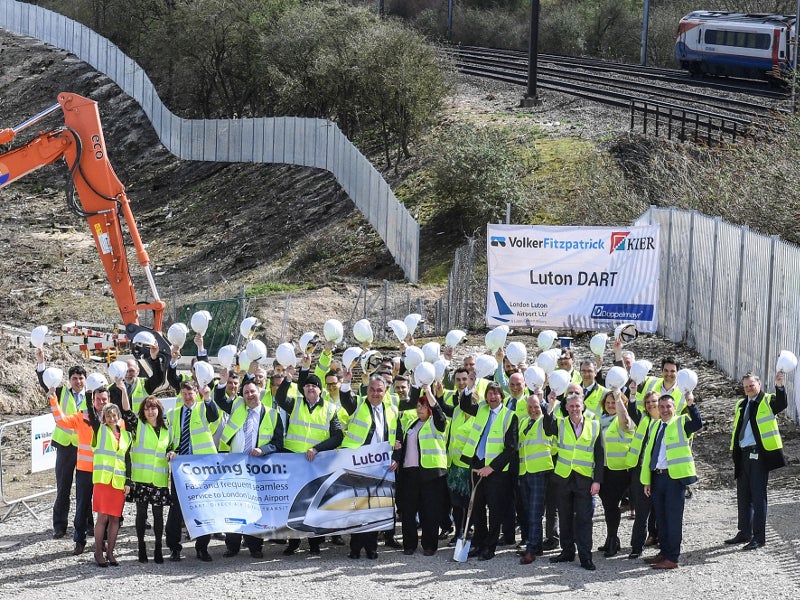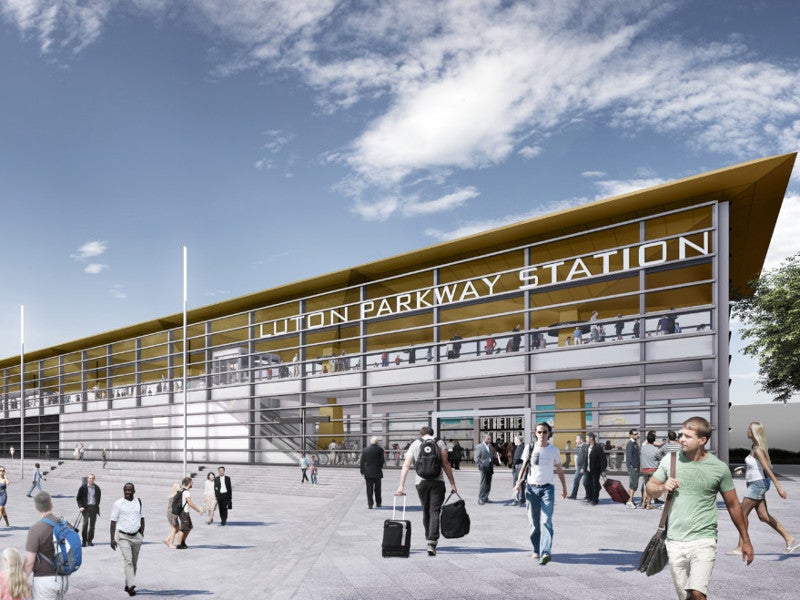Luton Direct Air-Rail Transit (DART) is a 2.1km-long above-ground automated people mover system designed to transport passengers from Luton Airport Parkway station to the London Luton Airport.
The project is being developed by London Luton Airport Limited (LLAL) and Luton Borough Council (LLAL) to provide fast, frequent and reliable transit services to and from the airport.
The development of the new twin-tracked fast transit system complements the £160m ($210.42m), three-year airport transformation programme completed in December 2018 to increase passenger capacity by 50%.
A ground-breaking ceremony of the project was held in April 2018 and the system is expected to become operational in 2021.
Luton DART details
Luton DART will enable passengers to travel from Parkway station to the airport terminal in less than four minutes. The airport terminal can be accessed through escalators, lifts and stairs.
Luton DART line will have two stations, one viaduct, one signature bridge and a cut-and-cover tunnel passing under a live taxiway.
Travel time between St Pancras and the airport using Luton DART is expected to be 30 minutes, once operational. The driverless Luton DART transfer system will replace the existing shuttle bus link, which takes ten minutes to carry passengers between Parkway station and London Luton airport.
The guided mass passenger transit system project will also feature a new pedestrian footbridge and concourse across the existing Network Rail tracks at Luton Parkway Station.
Luton DART route
The new station for the line will be built at Bartlett Square on the north-eastern side of the existing rail lines at Parkway station.
The route from Bartlett Square station will be elevated and will run parallel to the existing rail line until it reaches A1081 (Airport Way). The line will then cross A1081 through a new Gateway Bridge.
It will then run along the A1081 Airport Parkway and through the existing mid-term parking space before reaching the tunnel beneath the airport taxiway.
The Luton Airport Parkway and DART stations will be connected through a concourse and overbridge. The line will have two tracks, each measuring 1,955m.
Construction of Luton DART
The DART Gateway Bridge, which is 80m long, 25m high and 20m wide, was placed across A1081 in December 2019. The 1,000t bridge was built off-site near the Percival Way roundabout and was lifted, transported and placed into position using heavy-duty movers.
Piling works on the project commenced in October 2018 and were carried out in two phases.
The project includes the construction of a new multi-storey car park area with integrated drop-off zone at the airport. It also involves the creation of a new footbridge for passengers and delivering related improvements to Luton Airport Parkway station to improve access to the DART system.
Rolling stock and ridership
Luton DART line will be served by two automated people mover Cable Liner systems, with each train featuring four cars. Each train will have the capacity to carry up to 170 passengers.
The double-shuttle service will be available around-the-clock throughout the week. Passengers will be able to use the service every four minutes.
Funding for Luton DART project
The total estimated cost of the project is £225m ($290.78m), including transport system, station improvements and civil engineering works. The project is being funded by Luton Council and LLAL.
Luton Council received £1m in funding from the UK Government for building a construction skills training hub at the Luton DART site. The training academy is scheduled to be operated until March 2020.
Benefits of Luton DART
The Luton DART project will create over 500 jobs during construction, 30 apprenticeships across different sections and 17 permanent positions.
The main aim of the project is to provide a continuous journey and reduce travel time. It will also enhance passenger experience and support the airport’s planned growth to 18 million passengers annually by 2021.
Contractors involved
The VolkerFitzpatrick and Kier joint venture received a contract from LLAL in 2018 to serve as the lead contractor for civil engineering works of the project.
Doppelmayr Cable Car is building an automated people mover for the project. It is also responsible for operating the system for five years with an option to extend this term by five more years.
Arup helped LLAL in obtaining planning permission and offered design and construction procurement services for the project. The company will act as engineer and technical advisor until the programme is completed. Tony Gee is the lead designer of the project.
Victor Buyck Steel Construction was contracted by VolkerFitzpatrick-Kier to build the Gateway Bridge. HBPW provided engineering services for the construction of pedestrian footbridge and concourse.
London Luton Airport Operations Ltd (LLAOL), which is the operator of London Luton Airport, is responsible for building a new multi-storey car park at the airport as part of the scheme. Network Rail is responsible for the development of a passenger footbridge and upgrades at Parkway station.







